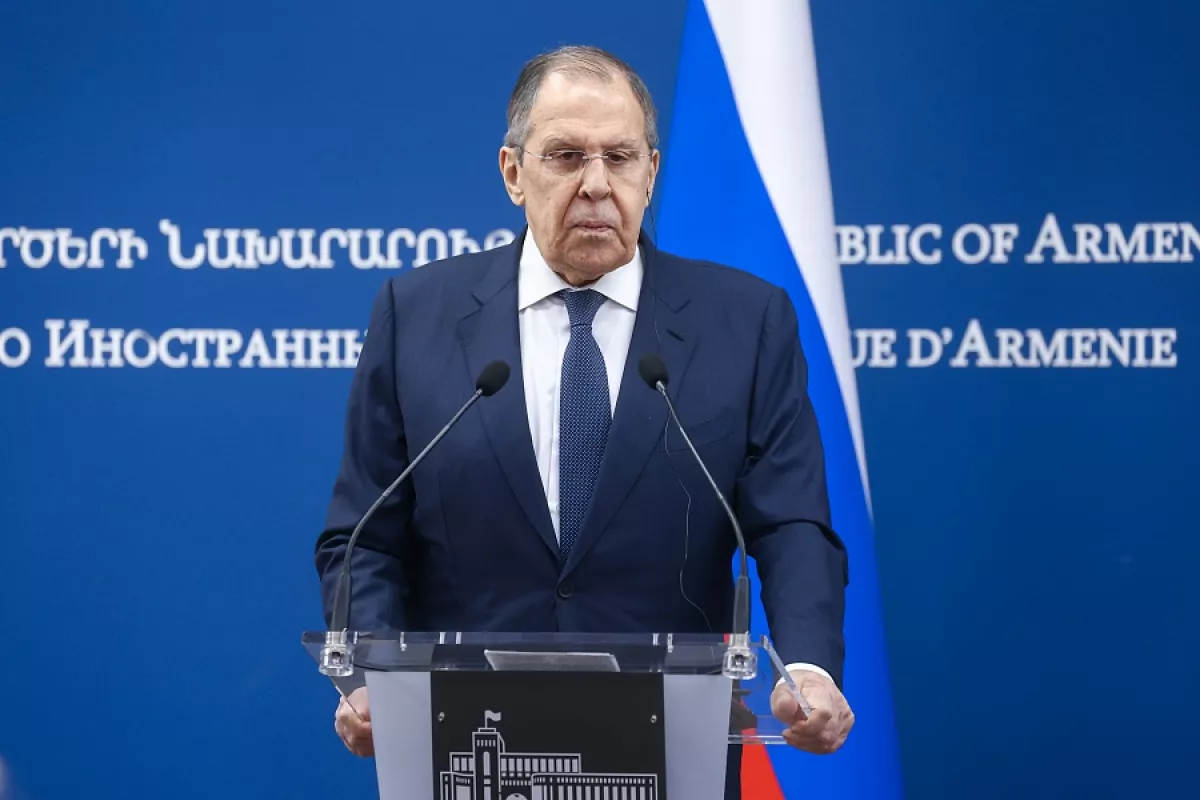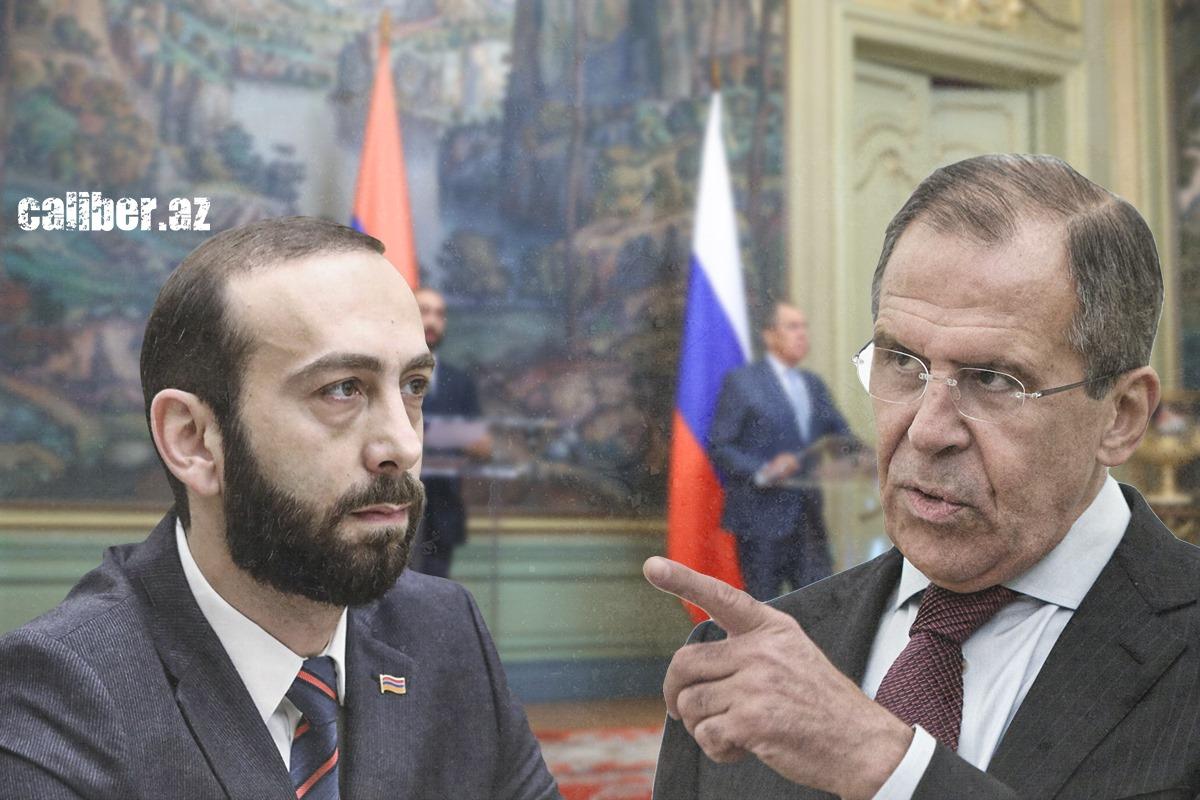Goodies from Moscow The shadow of the “big brother” looms over Armenia
The visit of Russian Foreign Minister Sergey Lavrov to Yerevan understandably drew significant attention from the media, experts, and the wider public across the South Caucasus. It took place against a backdrop of growing confusion within the Armenian leadership amid a shifting international landscape. With a helping hand from Donald Trump, Russia is making a notable step towards emerging from international isolation, and its narrative on the war in Ukraine is beginning to take on "an air of legitimacy." In short, Moscow has resolved certain issues and is now ready to take a closer look at those of its satellites that have become a bit too eager to squint toward the sun "rising in the West."
It was with this air of confidence that Russia’s top diplomat arrived in the Armenian capital. Unsurprisingly, all of his remarks were imbued with the same tone, while his Armenian counterpart, Ararat Mirzoyan, appeared rather dispirited by the state of affairs. No less downcast — a mood only accentuated by his strained smile — was the central figure of the occasion, Prime Minister Pashinyan. Only the President of Armenia, Vahagn Khachaturyan, maintained his usual steady and unintrusive cheerfulness — presumably because, well, that’s part of the job.
During the joint press conference with his Armenian counterpart, Lavrov made a point of reminding everyone that Russia remains Armenia’s largest trade and investment partner. He specifically highlighted the importance of the Russian military base in Gyumri and ongoing security cooperation — a clear signal to those within Armenia who have recently begun to suggest the base’s removal. Russia’s support for the peace process between Armenia and Azerbaijan, based on the trilateral agreements of 2020–2022, was reaffirmed. The "3+3" format (South Caucasus + Russia, Iran, and Türkiye) was also discussed as a platform for regional cooperation. Additionally, Lavrov stressed that non-regional actors should not be allowed to destabilise the region — a clear warning shot aimed at Yerevan’s growing Western flirtations.

Next came questions from journalists. One of them concerned the lack of response from the Collective Security Treaty Organisation (CSTO) regarding the alleged occupation by Azerbaijan of Armenian territory in the Jermuk (Istisu) area in 2022. In reply, the Russian minister reiterated the now-familiar narrative from Moscow: that Russia had tried to offer a “fair solution” to the Karabakh conflict by postponing the status of “Nagorno-Karabakh” indefinitely — until, “suddenly,” Pashinyan recognised Karabakh as part of Azerbaijan in Prague and invited an EU mission to Armenia instead of CSTO observers. Without delving into the ambiguities of the question or the answer, it’s worth noting that the core issue fuelling these disputes between the Armenian and Russian sides remains Baku’s unwavering policy of defending its sovereignty and territorial integrity.
One particular question drew keen interest — not just from observers, but also from Lavrov himself. It was a rather muddled query concerning Russian weapons allegedly used by Azerbaijan to “attack Karabakh.” The journalist also voiced grievances over Russian claims of “Ukrainisation of Armenia” and asked whether Moscow had similar plans for Armenia as it had for Ukraine. Lavrov's demeanour turned stern at such boldness. Among other things, he reminded everyone that Armenia itself had previously used Russian weapons “to occupy seven undisputed Azerbaijani districts” — implying that, in Russia’s view, the territory of the former NKAO was disputed, even though Moscow officially recognised Azerbaijan’s territorial integrity.
In other words, it was a statement that reaffirmed what has long been known in Azerbaijan: the occupation of Karabakh was facilitated with Russia’s backing and Russian weapons. In this context, it’s worth recalling the scandal that erupted when the late General Lev Rokhlin conducted a parliamentary investigation and revealed that Armenia had received $1 billion worth of Russian arms free of charge. Evidently, the journalist’s question rattled Lavrov enough for him to openly remind the Armenian side of this fact — and not just anywhere, but right in Yerevan.

Lavrov pointed out that Russia is currently in conflict with the West — particularly with France, which, he said, has taken a hostile stance — and thus it is surprising when an ally like Armenia purchases weapons from such countries. Nonetheless, he affirmed that Russia does not object to Armenia’s sovereign right to choose its defence partners. As for the so-called “Ukrainisation of Armenia,” he said he saw no grounds for such concerns, emphasising that Armenia remains an ally of Russia and does not pursue anti-Russian policies — unlike Ukraine. In other words, he laid out the facts as Moscow sees them.
Having dealt with what could be described as less-than-coherent questions from journalists, Russia’s top diplomat then moved into more comfortable territory — meeting with compatriots at the Russian House, followed by encounters with faculty and students from local branches of Russian universities, expert circles, and members of the youth wing of the “Eurasia” organisation.
At the first of these meetings, Lavrov highlighted the initiatives of the Russian diaspora, including efforts to collect humanitarian aid for participants in the "special military operation." He also reassured that Russia would continue to defend the rights of its compatriots — including in the spheres of culture and education — once again subtly warning Yerevan against the so-called “Ukrainisation of Armenia.”
Yet Lavrov was not content with merely advancing the Russian agenda in such a low-key manner. At the second event, he delivered a full-fledged lecture on Russia’s foreign policy, in which he denounced the hostile designs of the West and laid out Moscow’s justification for its military operation in Ukraine.
In effect, he presented Pashinyan and the pro-European segment of Armenian society with a fait accompli: a Russian statesman could arrive in Armenia’s capital and speak openly about Russia’s strategic interests. For a day, Lavrov effectively turned Yerevan into a platform from which Moscow broadcast its foreign policy ambitions to the world.
And all this is taking place in a country that, until recently, positioned itself as a stronghold of European policy in the South Caucasus — a country whose First Lady took part in an anti-Russian political event in Kyiv, and which has acceded to the Rome Statute of the International Criminal Court, thereby obliging it to arrest Vladimir Putin should he set foot on its territory.
What we are witnessing, then, is the gradual “correction” of Armenia and its return — if one may forgive the awkward metaphor — to the fold of the “big brother.” Most likely, Armenia’s Western trajectory will be indulgently tolerated by Moscow as a “permissible deviation from the norm.”
What all this means for the Armenian-Azerbaijani negotiation process remains unclear. Like the Europeans — and the Americans before them — Russia may well have its own reasons for hindering the establishment of peace on terms just to Azerbaijan. However, Baku is no stranger to such circumstances and, as before, will continue to pursue its objectives relying on its own strength and growing international standing.








